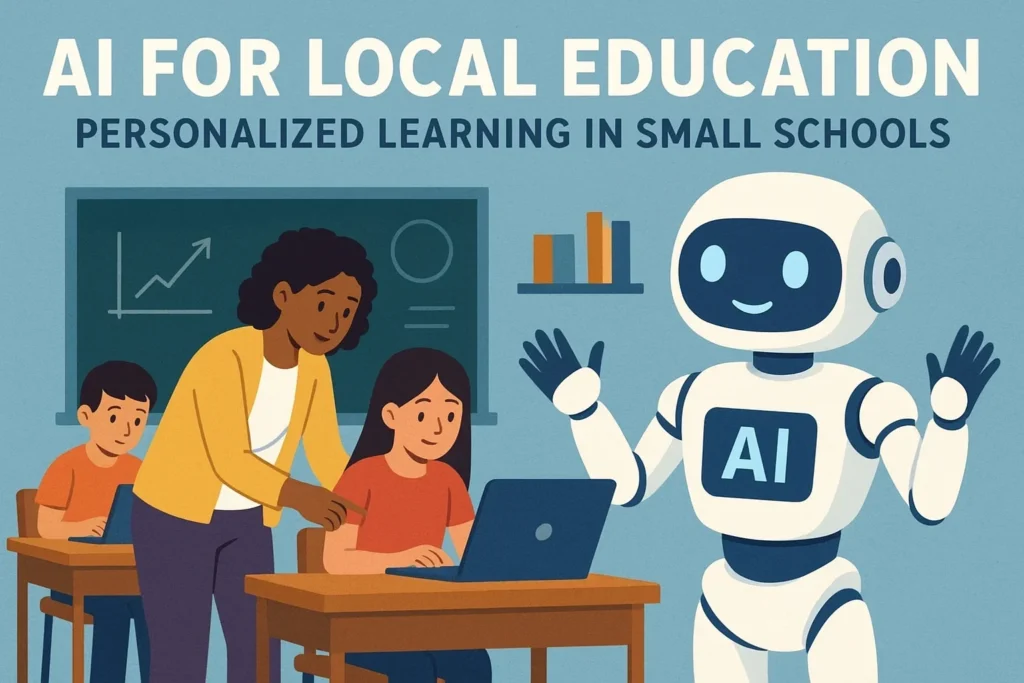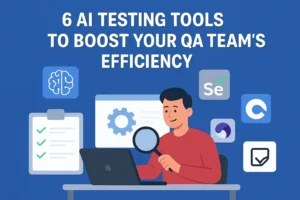Disclaimer: This article is for informational purposes only and is not intended as professional educational advice. Schools and educators should evaluate AI tools in the context of their specific needs, resources, and applicable regulations.
Small schools are the lifeblood of many communities, especially in rural or remote areas. Resources are scarce, teaching staff are small, and students come with a range of support needs. This one-size-fits-all approach to teaching can greatly impact learning opportunities in the classroom. Increasingly, AI is being seen as a disruptive force able to deliver truly individualized learning experiences even in environments where schools do not have the scale or setup.
The Challenges of Small Schools
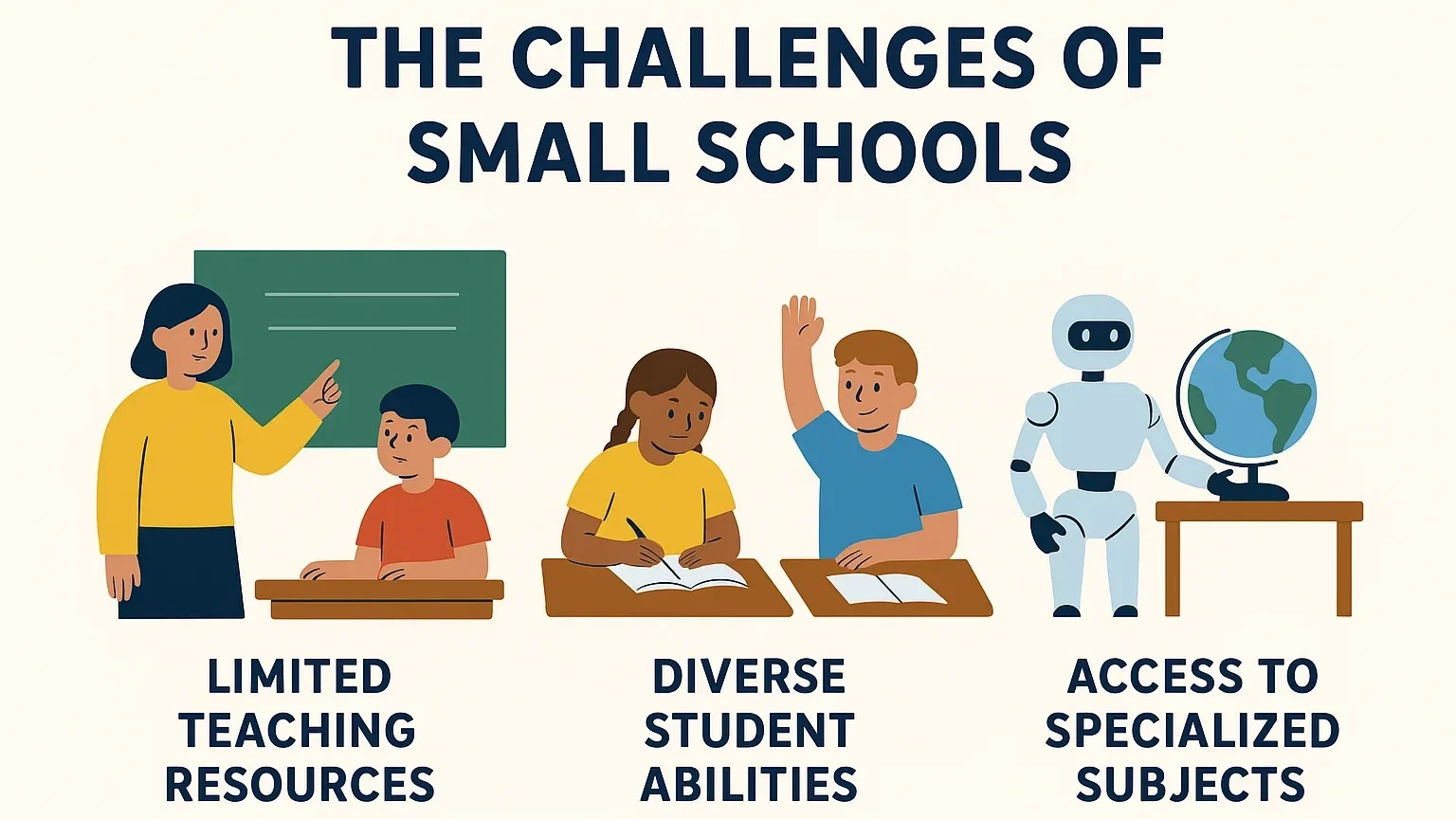
Limited Teaching Resources
Many teach in small towns, where a single teacher may be responsible for multiple grade levels and subjects. This makes it hard to tie lessons directly to the interests of students on a personal level.
Diverse Student Abilities
Variability in learning levels within the same classroom is increased with fewer enrollees. A few would be off the scale, others would need more support.
Access to Specialized Subjects
STEM, foreign language, or arts electives are standard offerings for an academic challenge, but these more advanced courses often cannot be provided due to budget and staffing difficulties.
How AI Addresses These Challenges
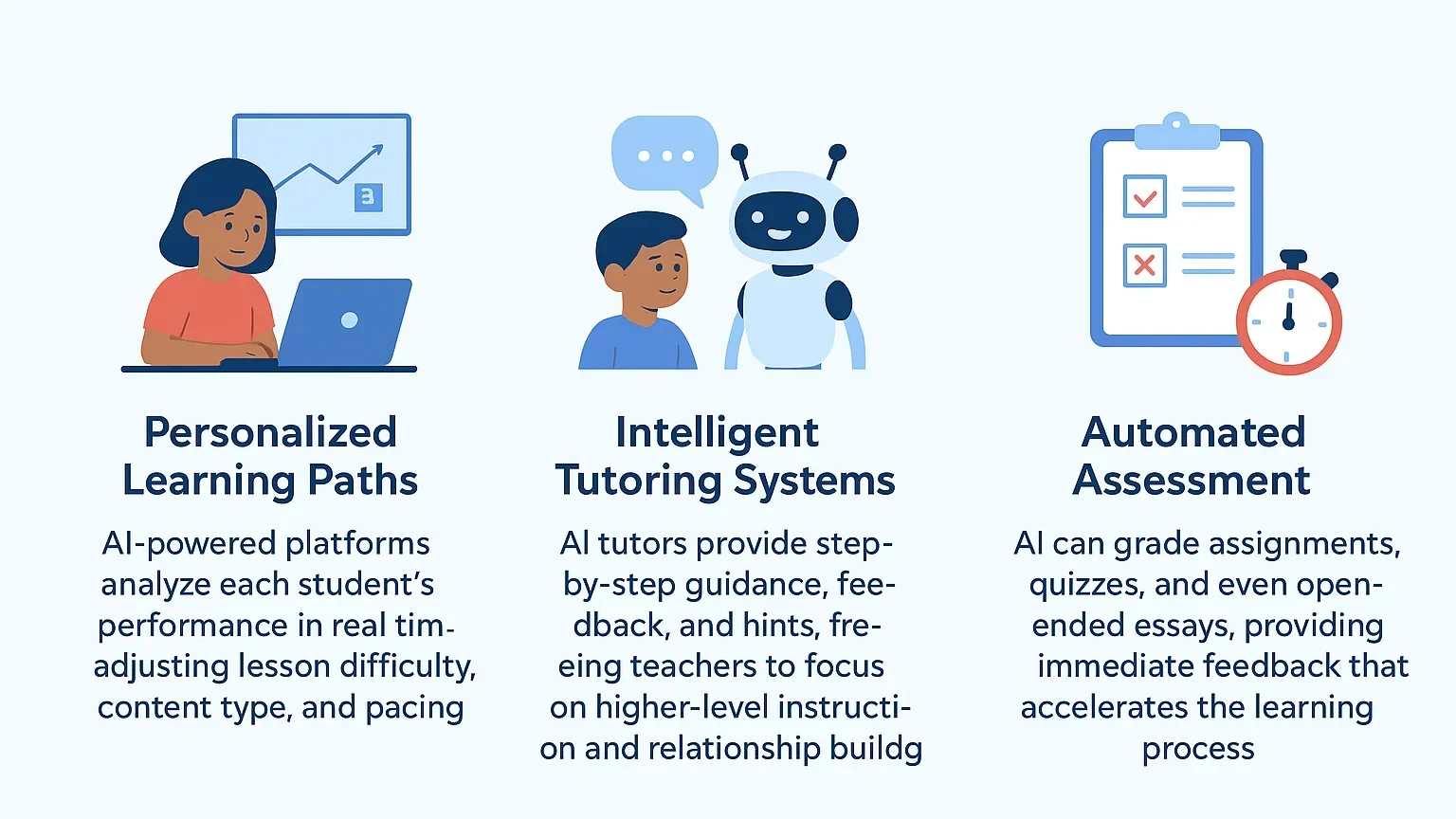
Personalized Learning Paths
These have an AI in place that reads the student’s performance in real time to adjust the severity, content type, and pace of learning. As a result, the advanced learners are being challenged, and others are getting more assistance where required.
Intelligent Tutoring Systems
It offers step-by-step guidance with hints and feedback alongside AI tutors. Instead, teachers are left to do what they were always supposed to do anyway – engage students in higher-level instruction and relationships that robots can’t replace.
Automated Assessment
AI can grade assignments, quizzes, and even open-ended essays, providing immediate feedback that accelerates the learning process.
Real-World Use Cases
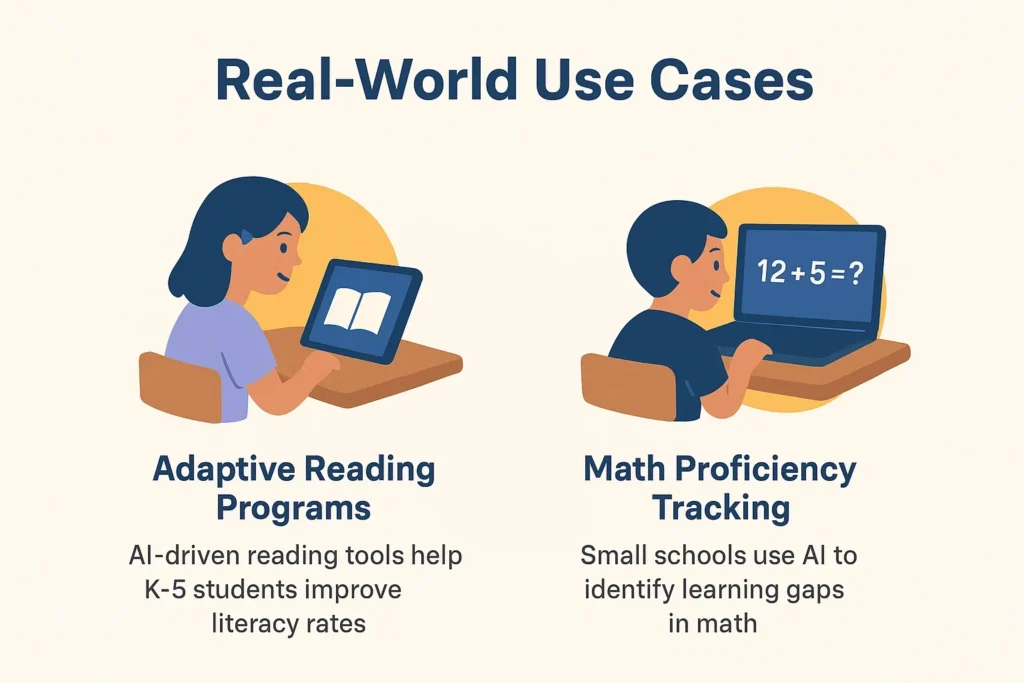
Adaptive Reading Programs
In rural Alaska, AI-driven reading tools have been deployed to help K-5 students improve literacy rates. These programs adapt to vocabulary level and reading speed, tracking progress for teachers.
Math Proficiency Tracking
Schools in the Midwest use AI to identify learning gaps in math, then generate targeted exercises for each student, saving teachers hours of manual planning.
Midpoint Insight: Conversational AI as a Learning Companion
Conversational AI tools expanded the avenues of learning, whereas structured AI platforms offer lessons that can be dynamically adapted to user needs. Picture of a student studying for a history test who can “chat” with an AI to remind the most important events, ask for clarifications, or even perform practice quizzes.
For instance, certain schools are trying out platforms like Overchat that allow students to interact conversationally with AI. This not only cements existing subject knowledge but also nurtures digital literacy skills for the communication tools of tomorrow.
Benefits for Teachers
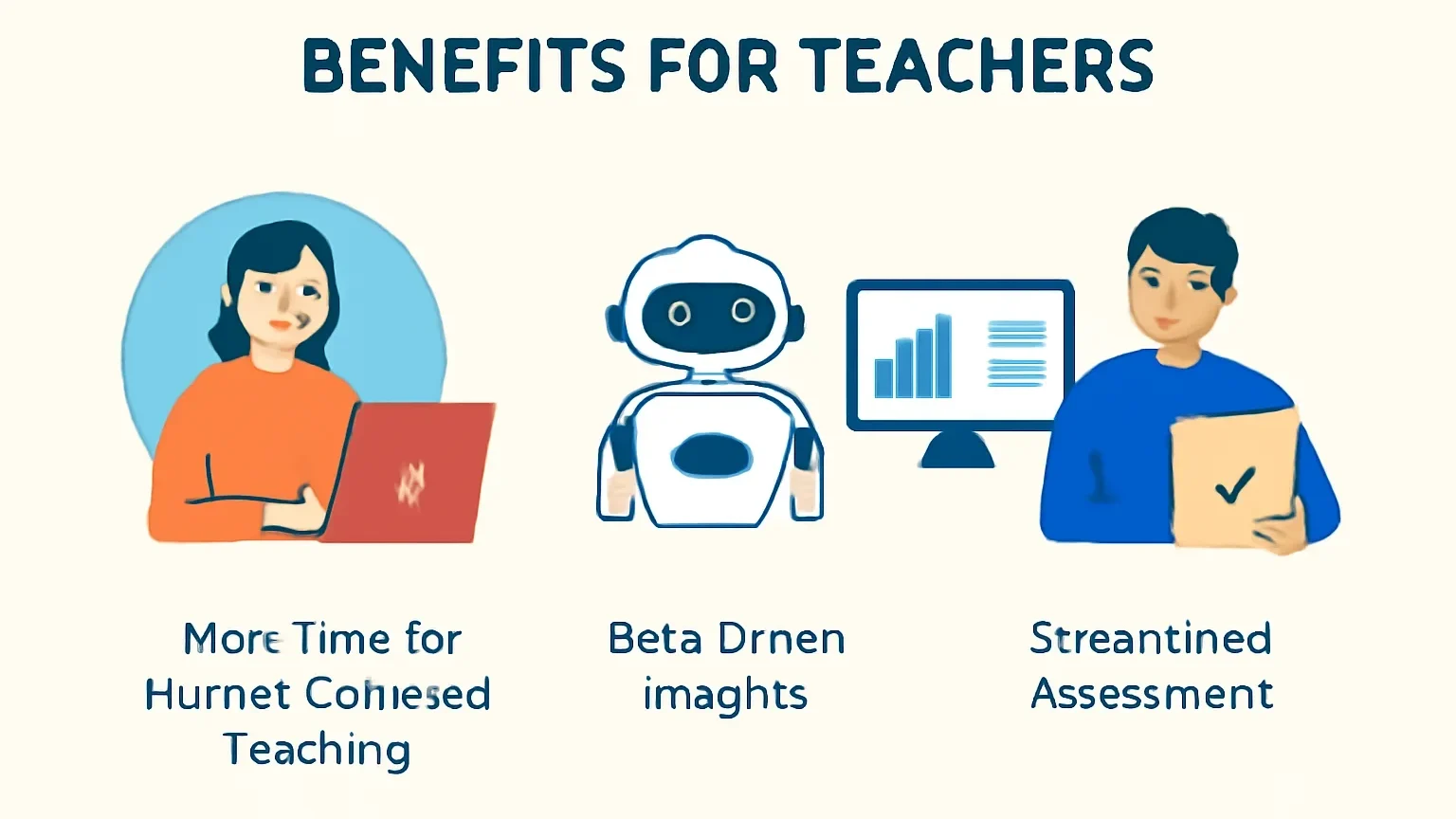
More Time for Human-Centered Teaching
By offloading repetitive grading and content preparation to AI, teachers can focus on mentoring, facilitating discussions, and supporting emotional well-being.
Data-Driven Insights
AI dashboards provide detailed analytics about class performance, highlighting which topics need review and which students may require extra support.
Overcoming Barriers to AI Adoption
Cost and Infrastructure
While AI platforms can be costly, cloud-based solutions and grants for rural technology initiatives are making them more accessible.
Teacher Training
For AI to be effective, educators need professional development to integrate these tools into their pedagogy without replacing the human connection at the core of education.
Privacy and Ethics
Schools must ensure AI tools comply with student data protection laws, such as FERPA in the U.S., and maintain transparency in how student information is used.
Expert Commentary: Balancing Tech and Tradition
Dr. Marisol Vega, an education policy researcher, notes:
“AI is a force multiplier for small schools. It doesn’t replace the teacher; it extends their reach. The magic happens when teachers blend AI’s precision with the empathy and community connection only a human can offer.”
The Future of AI in Schools
- Virtual Specialist Access: AI could connect students with remote subject-matter experts in real time.
- Predictive Learning Support: Algorithms might detect early signs of disengagement or learning difficulties before they become significant challenges.
- Community-Specific Content: AI could tailor learning materials to reflect local culture, history, and environment.
AI adoption in education is accelerating worldwide. A 2023 report by HolonIQ states that AI in education is projected to grow by 45% annually, reaching $25.7 billion by 2028. This growth reflects increasing investment in tools that can personalize learning and extend teacher capacity.
Conclusion: A Tailored Education for Every Student
“AI is not just a technical advance that helps local schools,” she says, “but an opportunity to provide individual, boutique-level education explicitly tailored to the rhythm of learning for each student. By combining adaptive learning tools, conversational AI, and teacher expertise, communities can ensure that even the most remote classrooms offer opportunities on par with larger, better-resourced schools.
Used by dedicated educators, AI could turn personalized learning from an unattainable ideal into a reality, making local schools beacons of educational innovation and excellence.






